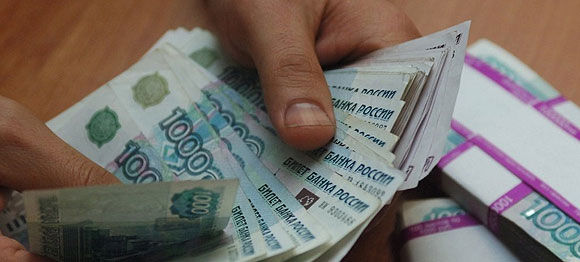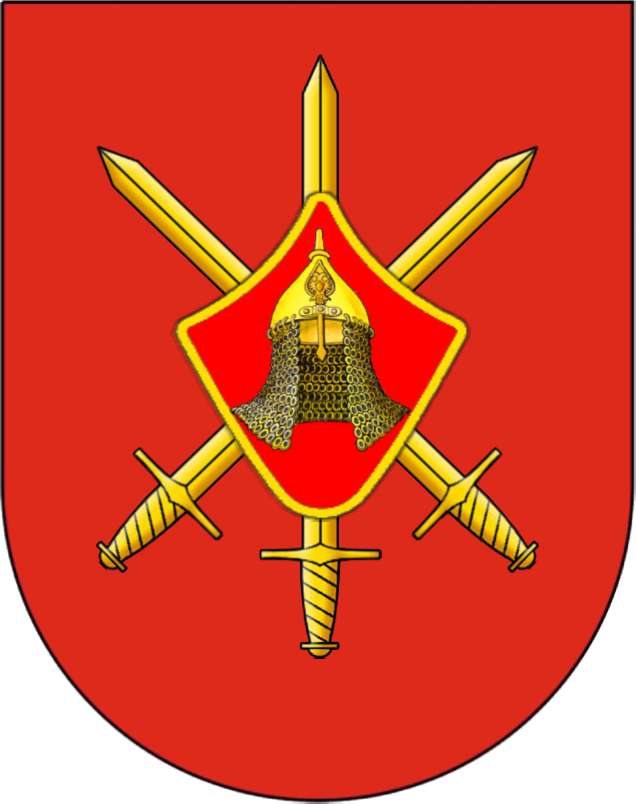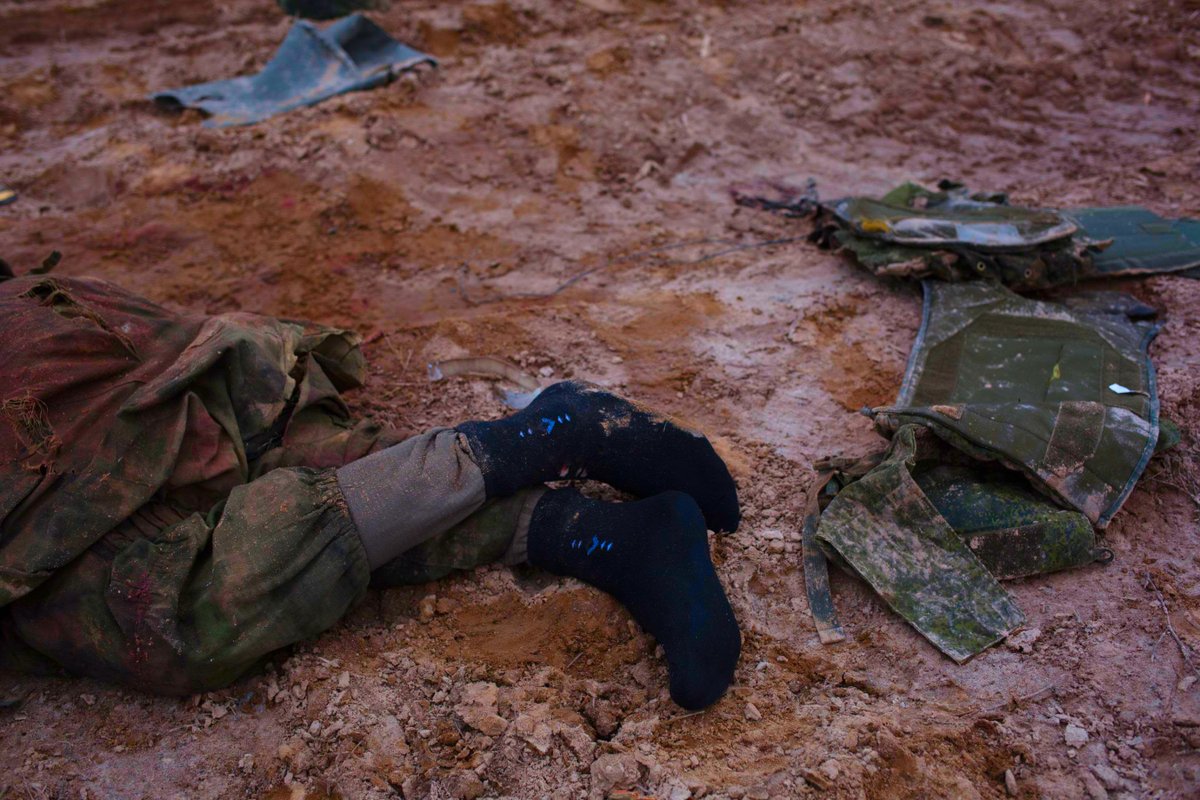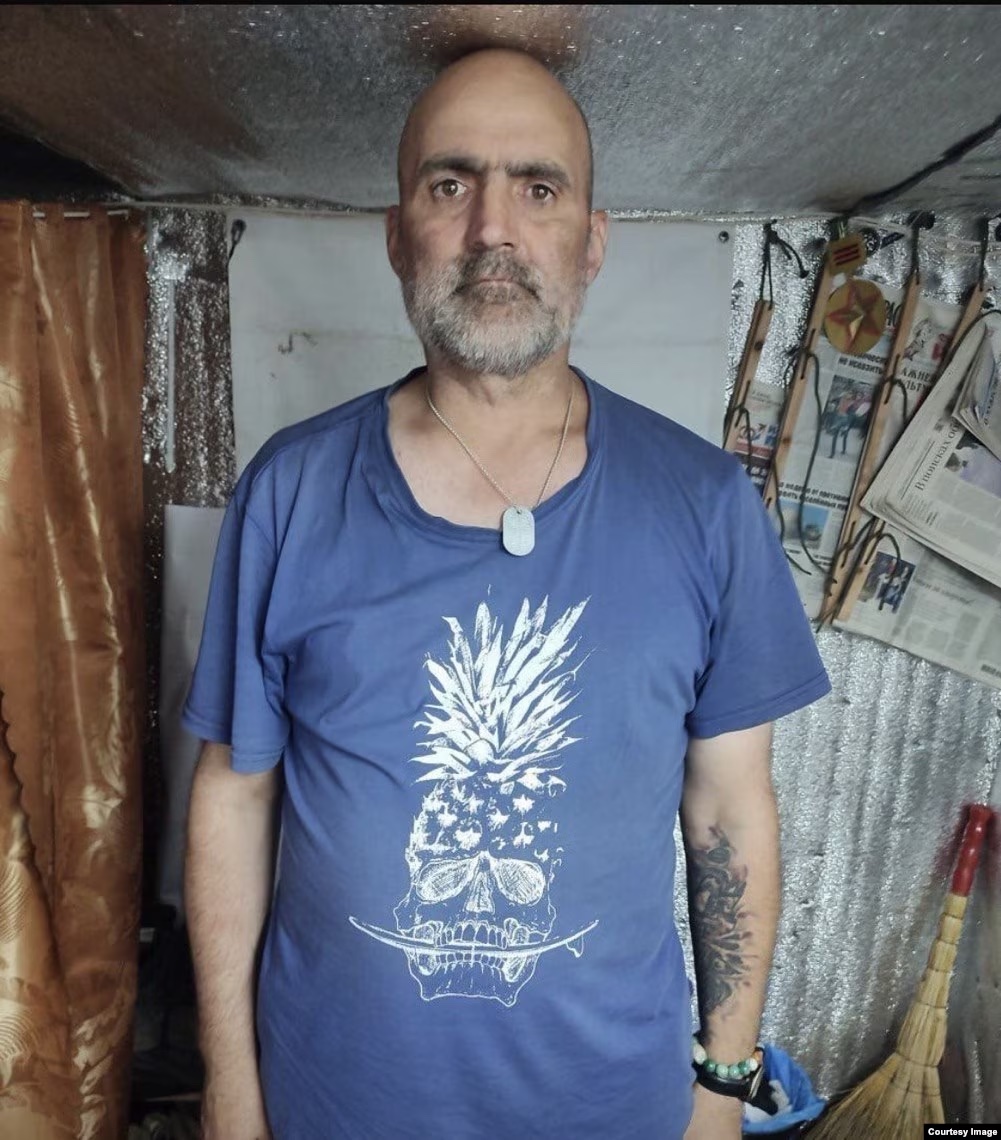@ian_matveev has posted an excellent thread analysing the current military situation in Ukraine. In the first of a series, he looks at the likelihood of a joint Russian-Belarusian attack on northern Ukraine. Translation follows. ⬇️
The Russian army's winter stalemate. Part 1. Is an offensive from Belarus possible or not?
Today we will begin to examine what the Russian army may undertake in the coming months and go over all fronts. Let's start from the top - with the alleged new attack from Belarus. 🧵 /1
Today we will begin to examine what the Russian army may undertake in the coming months and go over all fronts. Let's start from the top - with the alleged new attack from Belarus. 🧵 /1

I should say right away that Putin's army may act unpredictably, because it depends on the Kremlin's decisions. Therefore I'll proceed from the Russian army's somewhat perverse and certainly criminal logic. Don't consider all this as a prediction, more as a reasoning. /2 

Opening a new front or battle area is logical when a war or battle comes to a standstill. Right now Putin's army is at a stalemate - relying only on defence and unclear where and where to attack. On paper it seems that an attack in Western Ukraine would change that. But no. /3
1️⃣ What aims could such an attack serve? I will immediately discount the capture (or encirclement) of Kyiv and an offensive into the Chernihiv area. There are obviously not enough forces for the former, and the latter has no tangible result except the occupation of territory. /4
The only tangible objective could be the supply routes to Ukraine, which mainly go through Poland. In theory, by occupying western Ukraine, the Russian army could make it much more difficult to supply shells, equipment and even household items like generators. /5
Again, it is quite clear that capturing the entire west of the country is impossible. But if they advance at least partially, Russian MLRS and S-300 missiles for ground targets could regularly attack railways and highways. Which would lead to significant problems for Ukraine. /6
But to achieve such a goal, a significant foothold is needed. This would require the capture of several cities and large settlements. For example, to the Kovel-Sarny line with further attacks on Lutsk and Rivne. /7 

The airfield in Lutsk could be occupied, along with the Rivne nuclear power plant near Varash. Two highways to Kiev would be blocked at once, and Lviv and Ternopil would be only 100-120 kilometres away. Any lesser advance simply does not make any sense. /8 

Is it possible to attack on a smaller scale, along one road, say? But then the grouping will be more vulnerable – it's easier to attack one column, the logistics are even more difficult and the result is negligible. The Ukrainians will easily defeat a localised attack. /9
2️⃣ Battlefield. Having defined the goal, we must consider the known conditions of the battlefield. Winter precipitation is expected. Most likely, it will be possible to move only along known roads or specially laid paths. /10 

There are few roads in this area – only three, to be exact. All three roads leading from Belarus to Western Ukraine have one thing in common – they are narrow. The quality of the surface does matter – the trucks will cope. But the width does make a difference. /11 







The Russian army got stuck at the beginning of the war on the narrow road to Kiev. Similar problems await them here. Here they face similar problems. And around the roads there are forests and swamps. Swamps that do not freeze in winter. /12
In other words, if there is an attack from Belarus, the bulk of the troops and all supplies of the Russian army will be trapped on three narrow roads under the fire of the Armed Forces of Ukraine, which has already been prepared. /13 



Putin's units will be advancing through unfamiliar territory. And the AFU will defend on prepared terrain. Mines, roadblocks, artillery positions, and well-developed movement patterns of the units all create a great advantage for the Ukrainians. /14 



All significant targets are far from the border. In other words, for a long time the Russian army will have to pass essentially in a void, without any significant successes. The airfields will not be in the way. The Ukrainians can evacuate and retreat if necessary. /15
At the same time, the attackers' flanks will also be under threat, or the invasion zone would have to be expanded to the border with Poland, but that may cause nuances with NATO. In general, the battlefield on the border of Ukraine and Belarus is difficult to attack now. /16
3️⃣ The forces of the sides. An offensive can succeed even in difficult conditions if the forces are not equal. Monte Cassino was taken. And the Stalingrad victory, let's face it, wasn't achieved by stealth. Let's consider the strengths of both armies. First of all, Russia. /17
According to various sources, there are currently 9-12,000 mobilized people in Belarus who are being trained. Because there are not enough training ranges in Russia. But we can assume that this is the same grouping for an attack. However, this is absolutely not enough! /18 

The Russian army needs at least 3 mobile brigades (tank or motorized) and another 3 motorized infantry brigades or divisions to follow, support the attack and secure territory for the offensive along the three routes. /19
Total – 6 brigades + reserve. That is in the region of 40,000 men at least. Taking into account supply troops, additional artillery, special forces troops, I estimate a minimum possible grouping of 50,000 people. This counts only those who will take part in an offensive. /20
Let's go back to the calculations. Yes, in theory Putin has this many people, counting the newly mobilised. Apart from those 12,000 in Belarus he says there are a total of 150,000 people on the home front. However, no combat-ready units have been formed. /21
The Russian Ministry of Defence uses these mobilized men not as independent units, but to make up for the losses on the active front. This is partly because there are not enough equipment, supplies and officers to create large brigade-level units. /22
Moreover, officers play a decisive role. In a typical motorized rifle company, you can’t do without 4 officers, in a battalion there are already about 20 of them. And in a brigade, taking into account the command staff, there are more than 100. /23
If there are auxiliary units, then there are even more officers with unique skills.
Yes, it is theoretically possible to replace platoon commanders with, say, sergeants from among the more experienced soldiers. /24
Yes, it is theoretically possible to replace platoon commanders with, say, sergeants from among the more experienced soldiers. /24

The second difficulty is equipment. The Russian army is experiencing a severe shortage of tanks and armoured vehicles, which has been replenished even by deliveries from Belarus. There is a shortage of armoured vehicles even for the active front. /26
Suddenly it turned out that the T-62s are in storage, but the T-72s seem to have run out.
An offensive is impossible without armoured vehicles. /27
An offensive is impossible without armoured vehicles. /27
According to rough estimates before the invasion, on paper the Russian army had about 11,000 armoured vehicles, including tracked BMPs, wheeled APCs and unarmed MTLBs (3,500). Since then 2,800 have been lost according to Oryx. /28
oryxspioenkop.com/2022/02/attack…
oryxspioenkop.com/2022/02/attack…
Taking into account that APCs, BMPs, MTLBs and other vehicles are actively being used in the fighting, I think that no less than 5–6,000 of them are being employed. It turns out that some vehicles remain, but quite close to 3,000, if the paper figures are to be believed. /29
But keep in mind that when replenishing, all good equipment is used first. If these machines are still stored somewhere, then they are literally the worst. Many probably need repair. Supplying old vehicles to units for offensive use is not a good idea. /30
It's the same with tanks, and artillery, including MLRS. What's more, mobilized people in Russia don't even have enough bulletproof vests and helmets, not even enough socks. Even finding 50,000 pairs of socks for a new attacking force is a difficult task for Russia right now. /31
Many are turning their attention to the Belarusian army. Could it become the backbone of the offensive? They've announced a combat readiness review again today, there are rumors of mobilisation and there's a lot of talk about Lukashenko's soldiers possibly being used. /32 

The Belarusian armed forces officially number slightly less than 50,000. But that is all the armed forces. The ground forces number only 16,000 (infantry + special forces). Two mechanized brigades could theoretically lead the offensive. But who would remain in reserve? /33
Look at the map. The border between Ukraine and Belarus is quite long. Who will guarantee that by throwing all his forces into an adventurous attack, Lukashenko will not get a march of Ukrainian units to Minsk via Gomel and Bobruisk? /34 

A march to overthrow the regime, which will surely be supported by the locals.
He needs a force that will cover both Gomel and Mozyr and also control the internal situation – more about that a little later. /35
He needs a force that will cover both Gomel and Mozyr and also control the internal situation – more about that a little later. /35
Mobilisation in Belarus, firstly, is not quick, just like in Russia. Secondly, it will face similar problems and may result in mass protests. /36
Despite mobilisation, Putin's army is still in a situation of severe shortages. The attack we are discussing needs combat-ready, well-equipped units with reserves for 1-2 months of fighting. Where will they come from? /37
On the other side they will be met by the Ukrainian army, which is fighting on its own territory. Including the units covering Kyiv. Yes, most of the supplies and equipment are in the east. But the fact is that the defending forces need less of it. /38
Attacking with a Javelin is quite difficult. Sitting with a Javelin in an ambush waiting for enemy vehicles is workable. Yes, Ukraine would need two motorised brigades to provide a mobile defence. But if that fails, they can focus on static defence. /39
If we use an attack formula with a 3-to-1 strength ratio, it comes out that Ukraine needs only about 20,000 men for defence, taking other factors into account. This figure does not look unrealistic, I think Kyiv's defence is not less than that now. /40
4️⃣ Tactics of the sides. Assuming Putin's troops do decide to attack, what tactics should they expect? Can they outplay the Ukrainians with some special techniques? /41
So far, Russian units have used two methods of attack. The first is to get into trucks and drive forward until they start shelling. The second is to shoot a lot first, then storm the enemy positions, of which little is left. That's it. /42
To start breaking through Ukrainian territory, the Russian army will first have to win the border battle. And here they can use the second method of attack. Possibly using Belarusian artillery, missile strikes and bombing by Su-24 and Su-34 aircraft. /43
Is there any chance of winning? I think there is a minimum chance. The Russian army still has a lot of artillery and they can obviously bring more. /44
The shelling will be concentrated on 3-4 localised areas and it is not yet clear whether there are sufficiently reliable fortified areas in the first echelon of the AFU defence. /45
I think that with the competent use of all available firepower, Putin's forces may well penetrate 1-2 gaps in the Ukrainian defence – this is something to be feared. The AFU will probably retreat to the 2nd or even 3rd line to save forces. /46
And this is where the momentum of the offensive comes in.
As soon as the Russian army tries to launch a rapid attack along the roads in columns, the main danger awaits it. /47
As soon as the Russian army tries to launch a rapid attack along the roads in columns, the main danger awaits it. /47
They will not be able to reliably probe the entire territory and will definitely encounter ambushes, air strikes and attacks in the rear.
They will have to move artillery as well, which means bringing in a lot of ammunition and supplies. /48
They will have to move artillery as well, which means bringing in a lot of ammunition and supplies. /48
In essence, the Russian army will face a situation similar to the beginning of the war. There is simply no other way out for an offensive from Belarus. There is no magic way to teleport troops.
On the other side will be the Ukrainians. /49
On the other side will be the Ukrainians. /49
They will be experienced, well-armed and knowing how to fight Russian equipment. Ukrainians with HIMARS, M777s, CAESARs and Javelins. Ukrainians who are not afraid of the enemy. They will be free to choose defensive tactics. /50
The AFU can stand tight on the border, or it can flexibly retreat – only civilians will have to be evacuated, but there are not too many of them there. /51
The Ukrainians are more likely to apply a mixture of static and mobile defence, clinging to key defensive areas, wearing down Putin's army. /52
I do not see any way in which the Russian army could win. On the contrary, by attacking it will only engage in a knowingly lost battle. It will lose even more soldiers and equipment. In addition, it will waste a lot of resources that will not go to other fronts. /53 

I think the Russian General Staff understands this. Most of them are clearly stupid of course, but Putin's generals have clearly been cautious of late. They have screwed up too much, so they will not risk starting something radically new. /54
Especially since the offensive from Belarus reeks of danger, and the flashbacks are not the most pleasant. Furthermore, there are clear political reasons why this adventure cannot take place. /55
5️⃣ Political and other external factors. These may well be the ones that carry the most weight for Putin (and it will of course only be he who decides on a new offensive). And here we need to delve a little into the world of Lukashenko's politics. /56
This dictator has just recently crushed protest with violent repression, with literally one foot in the air between Minsk and Rostov. Lukashenko is well aware of how close he was to losing power and will now be wary of making any sudden moves. /57 

After all, Lukashenko was largely saved by Putin, who has no attention left for Belarus now. Moscow has much less power, and attention is focused on Ukraine. Therefore, the moustached cockroach can only rely on his loyal enforcers. /58 

That is why I exclude the entry of the Belarusian army directly into the war. Firstly, no one knows how quickly it will revolt. Secondly, the absence of the army and security forces (and they will be sent too) at hand deprives Lukashenko of protection. /59
Mobilisation may become a trigger for protests.
Yes, he might still survive, but who knows for sure? And he has only one power - he does not want to lose it. /60
Yes, he might still survive, but who knows for sure? And he has only one power - he does not want to lose it. /60
Lukashenko knows perfectly well that the Belarusians hate him and are ready to drive him away at a convenient opportunity. Therefore, he will try not to provide this opportunity. /61 

Besides, both the authorities and the generals in Belarus understand how this war is going. That it is lost by Putin. No one will enter a lost war with weaker forces. All the more so as now there is also the risk of transferring hostilities onto the territory of Belarus. /62
One must also take into account international politics. I am sure Lukashenko still wants to sit on the "hello, I am a European" chair and believes that the EU will at least accept him, if not forgive him, as a kind of bridge between civilisation and Putin. /63
And a real war with Belarusians killed at the front would also break the thesis of stability, on which Lukashenko has also been riding for years. If men go to die, who will "toil peacefully in the factories and farms"? /64
All these factors will prevent Lukashenko using the army to support a Russian offensive into western Ukraine. And without this the Russian army will be even more hindered. There is another interesting factor, by the way, which should not be forgotten. /65
It's quite easy for Western and Ukrainian intelligence to keep track of military preparations in Belarus. There is a NATO country, Poland, nearby – reconnaissance aircraft easily fly from it. And after all that's happened in February, I think they're looking east pretty hard. /66
Which means there will be no surprise effect for the Russian grouping. Even their artillery positions will be caught on camera, troop concentrations and frontline depots. All of these will be targets for HIMARS if an attack begins. /67
The Russian grouping runs the risk of being left without supplies from the very start.
From this combination of factors, I believe that a Russian offensive from Belarus is an impossible gamble. /68
From this combination of factors, I believe that a Russian offensive from Belarus is an impossible gamble. /68
Again, Putin's insanity is impossible to predict and even such a suicidal attack could be launched on his personal order. /69
But within the Russian army's general logic, all the talk of an offensive from Belarus is just a way to scare the Ukrainians and distract the AFU. And undoubtedly, in this way this tactic works. The AFU has to keep some forces in the north to keep an eye on the neighbours. /70
There is no point in waiting for something new here – talk and news about another Belarusian army exercise and possible attack will continue, while Lukashenko and Putin will try to fuel all these fears. /71
This is only the first part of a series of threads about the situation in the war in winter. Next we will analyze the other fronts and areas of possible attacks by Ukraine. /72
But the main theme will remain the same - the impasse of the Russian army, which will most likely last until spring. /end
Original thread:
Original thread:
https://twitter.com/ian_matveev/status/1602608193154187264
• • •
Missing some Tweet in this thread? You can try to
force a refresh








